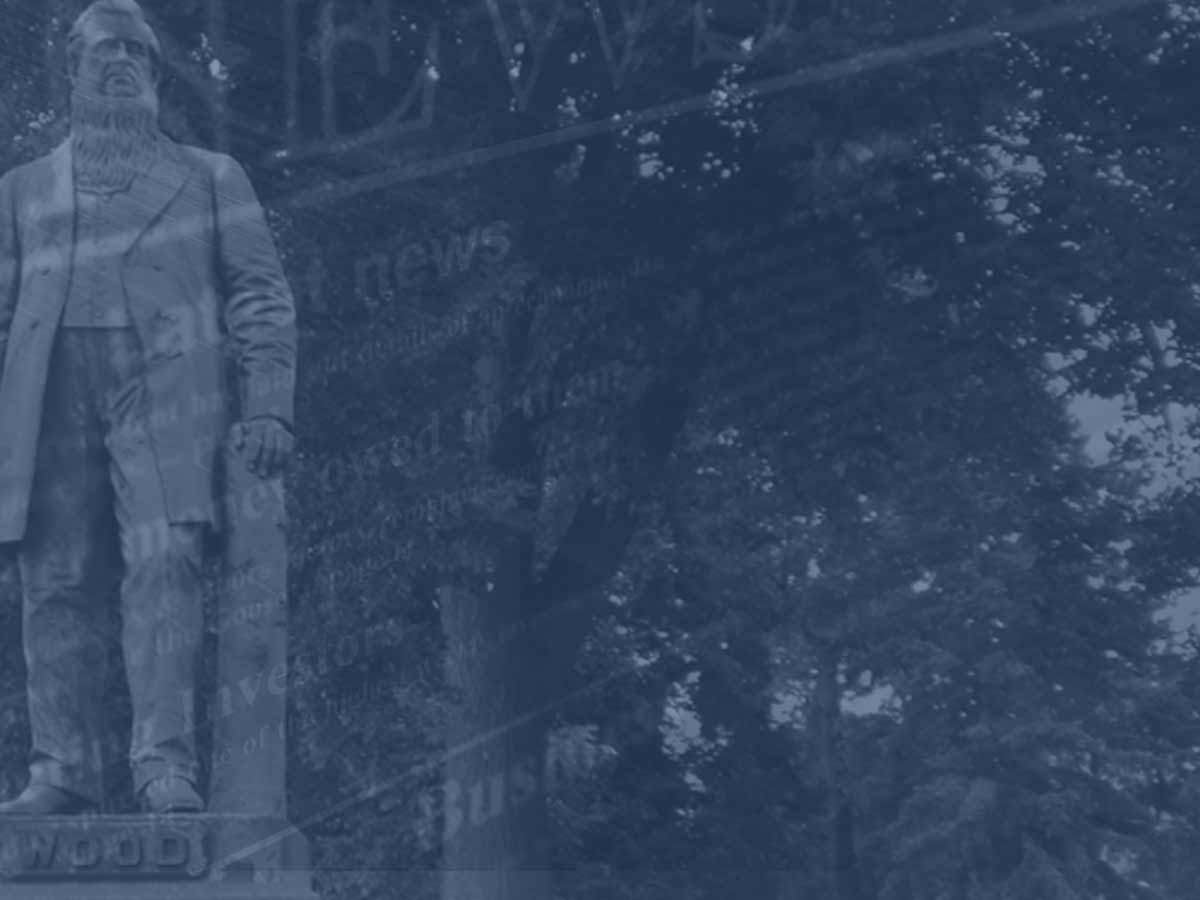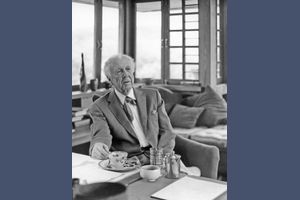


7 years, 8 months ago HSQAC
Frank Lloyd Wright was an American architect, designer and writer. His concept of “organic architecture” stresses designing structures in harmony with humanity and the environment.
Wright was the leader of the Prairie School movement. The American Institute of Architects recognized Wright as the “greatest American architect of all time” in 1991. His career as an artist, architect and educator spanned more than 70 years. Wright designed more than 1000 structures, with 532 being fully completed. Adding to his legend is a very eventful and colorful personal life that included his abandonment of his family and a bloody murder and fire that devastated his Taliesin studio in 1914.
As successful as his early career had been, he found himself at a personal and professional crossroads in 1909. His Prairie House designs were the height of modernism, but he failed to attract commercial clients. Sensing Wright’s professional impasse, European lecturers and publishers, including Ernst Wasmuth, attempted to lure Wright to Europe. Wright initially rejected these European invitations, but his personal life devolved, which prompted a change of heart. His marriage to his wife Kitty was deteriorating. Frank fell for and entered into a relationship with Mamah Borthwick Cheney, the wife of an earlier Oak Park client. With his marriage in tatters, he abandoned his family. A trip to Germany seemed like a logical way to escape the gossip and innuendo in Oak Park. Wright went to Berlin to work with Ernst Wasmuth on the publishing of Ausgefuhrte Bauten und Entwurfe von Frank Lloyd Wright, which translates to Studies and Executed Buildings of Frank Lloyd Wright. This series of prints is better known in America as The Wasmuth Portfolio.
The Wasmuth Portfolio was a grand representation of the architectural masterpieces of Frank Lloyd Wright. After traveling throughout German and Italy, Wright eventually decided to settle in Florence. His disdain for Renaissance architecture spurred his creativity as he began translating color renderings of Oak Park works into line drawings. The resulting portfolio consisted of 100 prints in two volumes. One thousand copies of the Wasmuth Portfolio were planned, but only 650 were made. Wright was greatly influenced by Japanese art and embossed a blindstamp “chop” on each plate and tissue. The “chop” is clearly visible in the Wasmuth Portfolio collection.
The concept of the Wasmuth Portfolio was for Wright to produce one print of each building in the structure’s natural state and one print of the building’s floor plan with elevation. Of the 650 portfolios produced by Ernst Wasmuth only 150 remain today. It is exceedingly rare to find prints form the Wasmuth Portfolio, and extremely difficult to find a complete volume. After his successful tour through Europe, where he found critical acclaim, Frank Lloyd Wright returned home to Oak Park and Chicago. When he arrived he was shocked as he encountered an artistic environment inhospitable to a modernist, like himself. Moreover, he found his personal transgressions of leaving his wife Kitty and his children for Mamah Cheney had not been forgotten or forgiven. Feeling personally shunned and professionally ostracized, Wright moved to Wisconsin to the valley where he grew up. In Wisconsin, he built the Taliesin.
It was while he was working on the Midway Gardens project in Chicago, in August 1914, that Wright heard of horrendous murders and fire at Taliesin. A male servant from Barbados named Julian Carlton set fire to Taliesin and murdered seven people with an axe while the flames engulfed the living quarters. The massacre included Wright’s beloved Mamah and her two children. One of the survivors of the fire and the killing spree helped put out the fire, but the residential wing of Taliesin was destroyed. The majority of the 530 copies of the Wasmuth Portfolio that Frank Lloyd Wright had brought from Berlin, were destroyed. Only 30 copies of the portfolio were saved and several of them were damaged. In recent years, individual prints of the Wasmuth have appeared at galleries and auction houses; many have water damaged edges. Many of the prints from the Historical Society of Quincy & Adams County collection show obvious signs of the devastating fire at Taliesin.
The Wasmuth Portfolio is an amazing graphic record of the work of America’s greatest architect. The prints are intertwined in a story of invention, genius, hubris, murder and tragedy. The portfolio is considered by many to be more important to history than any individual Prairie School or other Wright masterpiece. Portions of the Wasmuth Portfolio are on display at the History Museum. For more information, call the Historical Society office at (217) 222-1835 or go to www.hsqac.org.